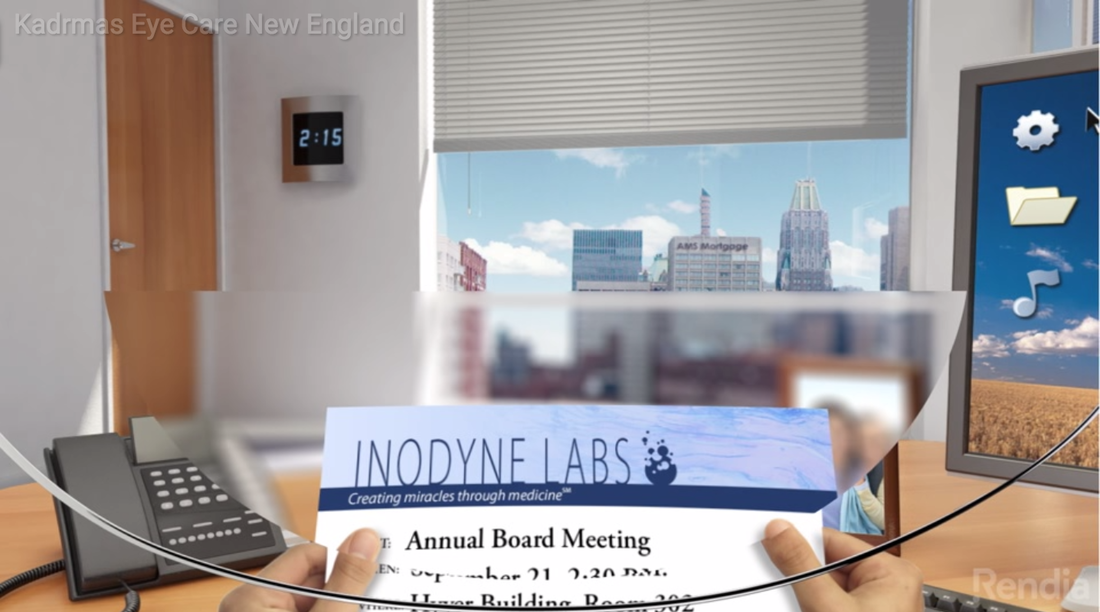It is important to understand the various types of IOLs available, as they offer different benefits. Understanding what is right for you and your lifestyle will help your cataract surgeon identify the right IOL for you.
Single-Focus Intraocular Lens (IOL)
Single-focus IOLs, also called monofocal IOLs, have been used in cataract surgery for more than 30 years. It is considered the traditional lens replacement and corrects only distance vision for those without astigmatism, an uneven curvature of the cornea that causes blurry vision at distances.
With single-focus IOLs, you may still need to wear glasses for intermediate and near vision. As such, this type of lens replacement is great for those who want good distance vision and do not mind wearing glasses for intermediate and near vision. Alternatively, if you need reading correction and wish to minimize your need for glasses, you can choose a monovision option. Two different IOLs will be used to provide distance correction in one eye and reading correction in the other eye. Multi-Focus Intraocular Lens (IOL)
Multi-focus IOLs, also called multifocal IOLs, are a newer development for cataract patients. Unlike single-focus IOLs, they offer clear vision at many distances, including near, intermediate, and far. There are several types of multi-focus IOLs, each with unique attributes that may or may not be of benefit to your vision correction needs. We will describe three types of multifocal IOLs and their attributes briefly here.
TECNIS® MULTIFOCAL IOL The TECNIS Multifocal IOL uses three complimentary technologies to restore a full range of vision following cataract surgery. In particular, this multi-focus IOL option offers sharper vision in low-light conditions. This lens works by providing particular ‘zones’, which the brain learns to ‘look’ through to provide sight at different ranges. TECNIS SYMFONY® IOL The TECNIS SYMFONY IOL is a multifocal IOL that offers extended range or depth of focus. This lens provides a continuous, full range of vision from near to far. TECNIS SYMFONY® TORIC IOL The TENCIS SYMFONY TORIC IOL provides the same vision benefits of the SYMFONY IOL and addresses astigmatism (uneven curvature of the cornea). If you have all-laser cataract surgery and astigmatism, your cataract surgeon may be able to correct your astigmatism during surgery. Toric Intraocular Lens (IOL)
TENCIS® TORIC IOL
If you have traditional cataract surgery and astigmatism (uneven curvature of the cornea), your cataract surgeon may recommend the TENCIS TORIC IOL. This lens is made for sharp vision and corrects high levels of astigmatism at the time of cataract removal. A toric lens provides good distance vision. It does not correct intermediate or near vision, so glasses may still be needed to see well at all distances. Selecting the Right IOL for You
Your cataract surgeon will be able to discuss cataract surgery and IOL options available to you, as well as help you determine which surgical approach and lens replacement are right for you and your lifestyle. At Kadrmas Eye Care New England, we have two highly skilled and experienced cataract surgeons who can have such conversations with you and create a custom treatment and vision correction plan for you:
Please call us at 508-746-8600 to schedule an appointment with Dr. Strecker or Dr. Nielsen. In the meantime, in our next and last post in this series, take the IOL self evaluation to get an idea of which lens replacement might be right for you following cataract surgery. In addition, if you would like to learn more about cataracts and cataract surgery, please visit our Cataracts webpage, as well as our Cataracts blog posts. Comments are closed.
|
EYE HEALTH BLOGCategories
All
Archives
July 2024
|
|
Kadrmas Eye Care New England
55 Commerce Way, Plymouth, MA 02360
14 Tobey Road, Wareham, MA 02571 133 Falmouth Road (Rt 28), Mashpee, MA 02649 |
Phone Number:
1-508-746-8600 Hours: Monday through Friday — 8 AM – 4:30 PM |


 RSS Feed
RSS Feed
